Abstract
A novel Δ5-desaturase-defective mutant was derived from an arachidonic acid-producing fungus, Mortierella alpina 1S-4, after treating the parental spores with N-methyl-N′-nitro-N-nitrosoguanidine. The mutant produced only a trace (about 1%) amount of arachidonic acid, and the ratio of dihomo-γ-linolenic acid (DGLA) to total fatty acids in each lipid class was markedly high, accounting for as much as 60% in phosphatidylcholine. Under submerged batch culture conditions, the mutant produced 2.4 g of DGLA per liter (43.3% of total fatty acids) when grown at 28°C for 7 days in a 5-liter jar fermentor. The other major (more that 1%) fatty acids were palmitic acid (21.2%), stearic acid (9.6%), oleic acid (14.3%), linoleic acid (4.4%), and γ-linolenic acid (5.8%). About 80 mol% of the DGLA produced was found in triacylglycerol.
Full text
PDF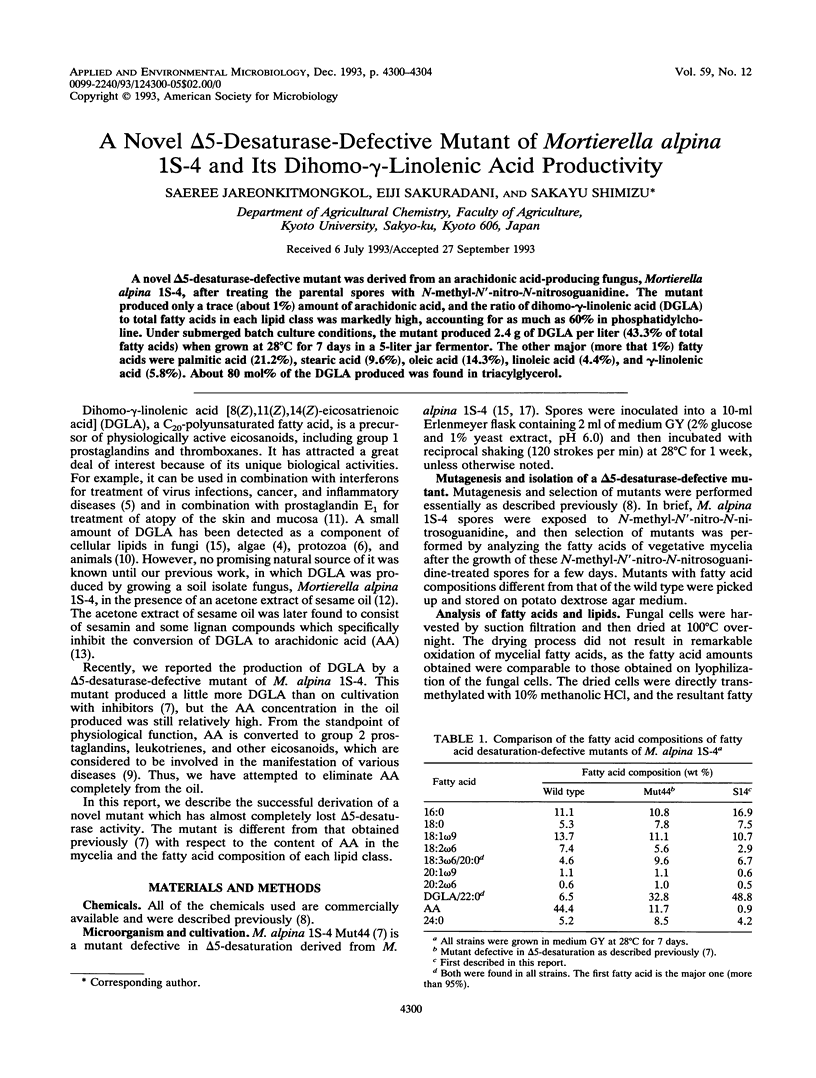
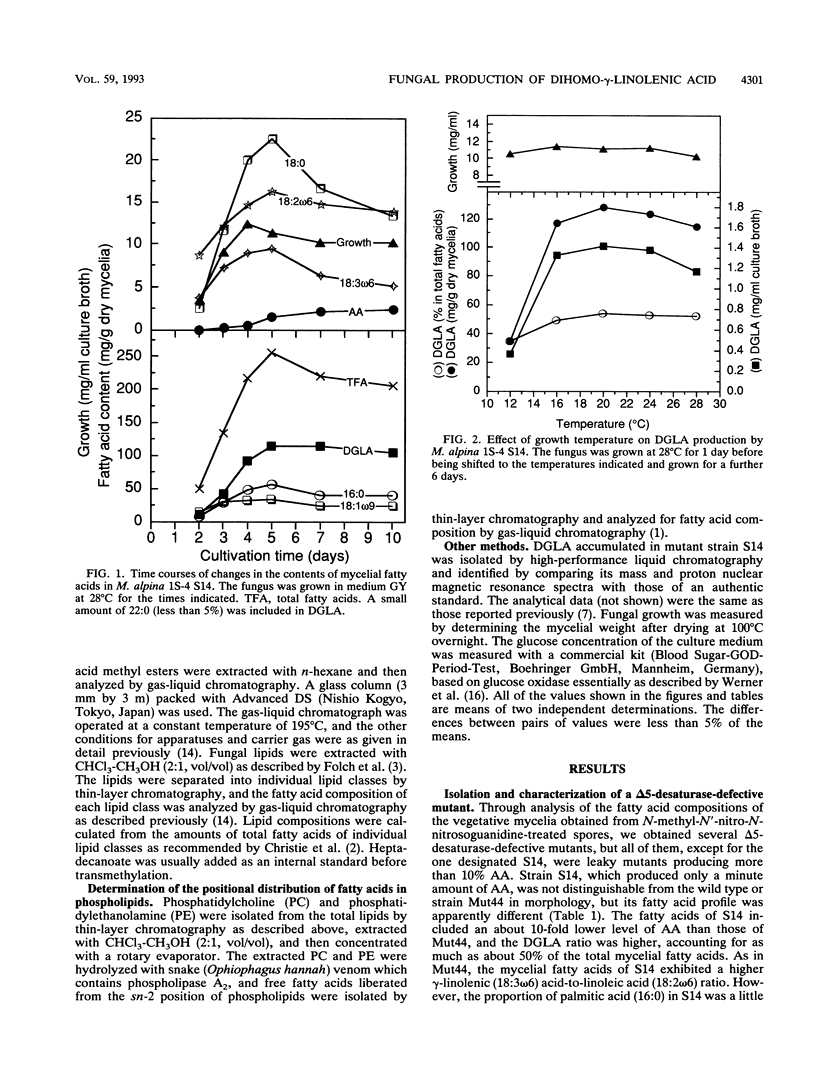
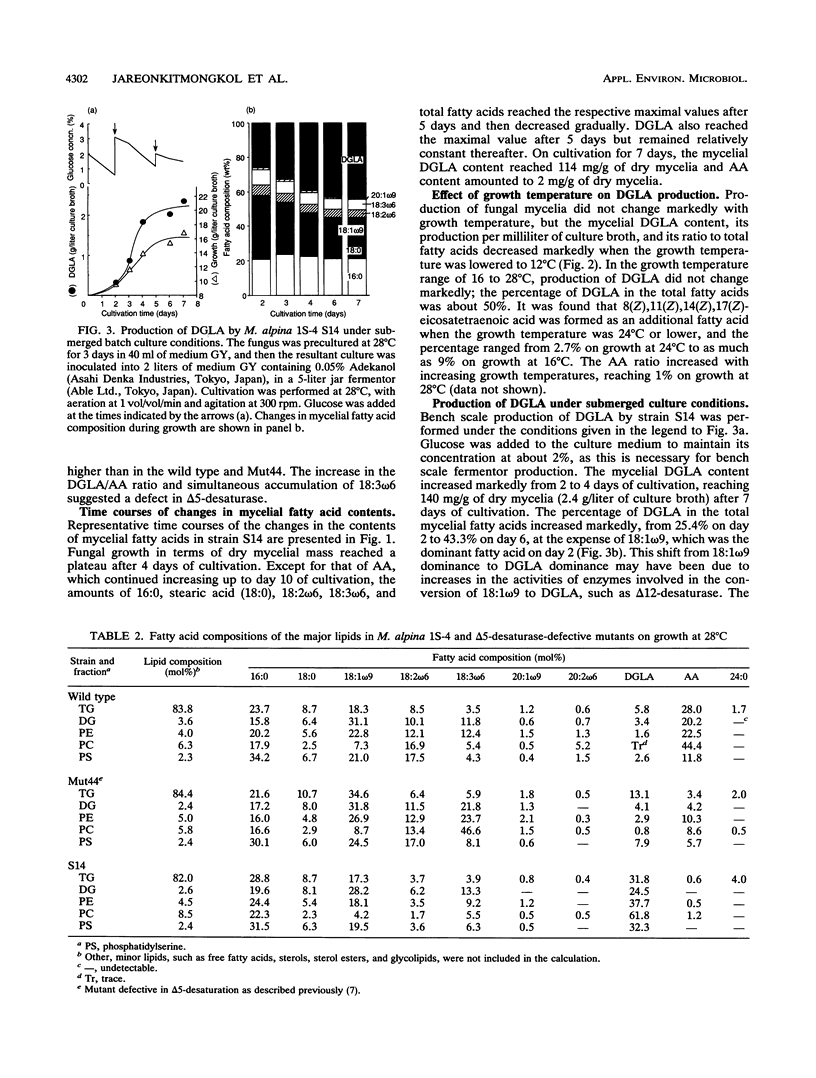
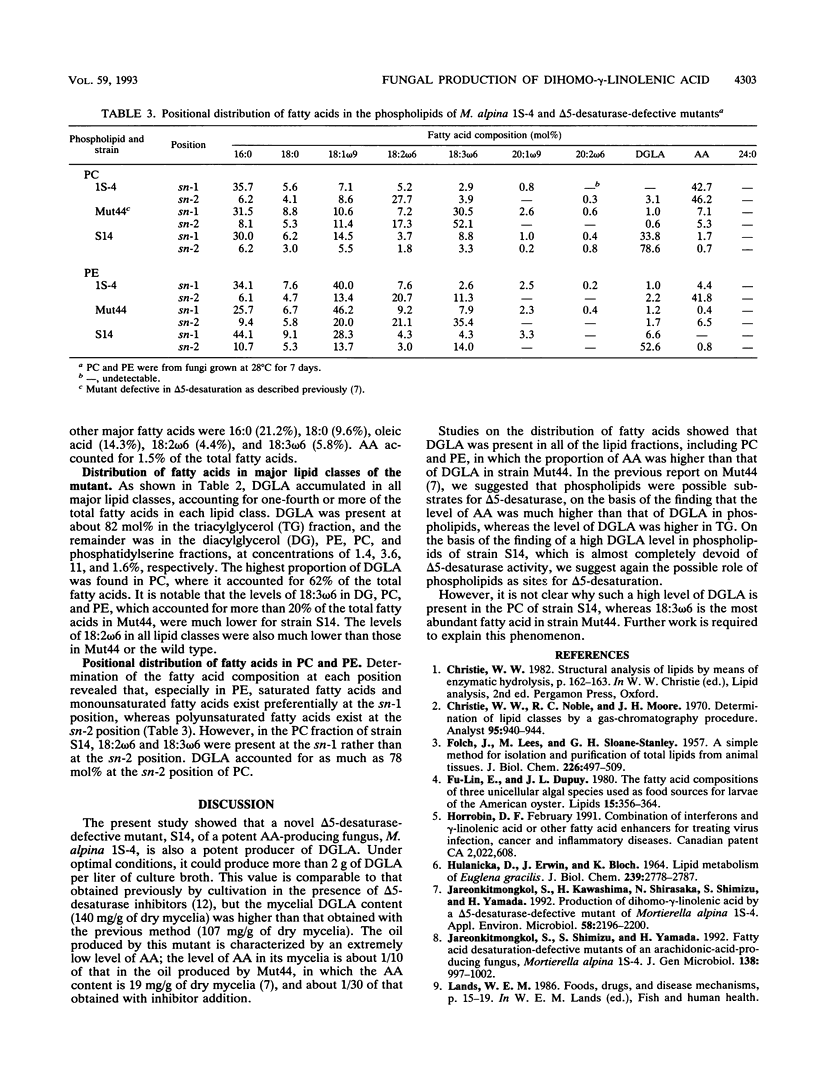
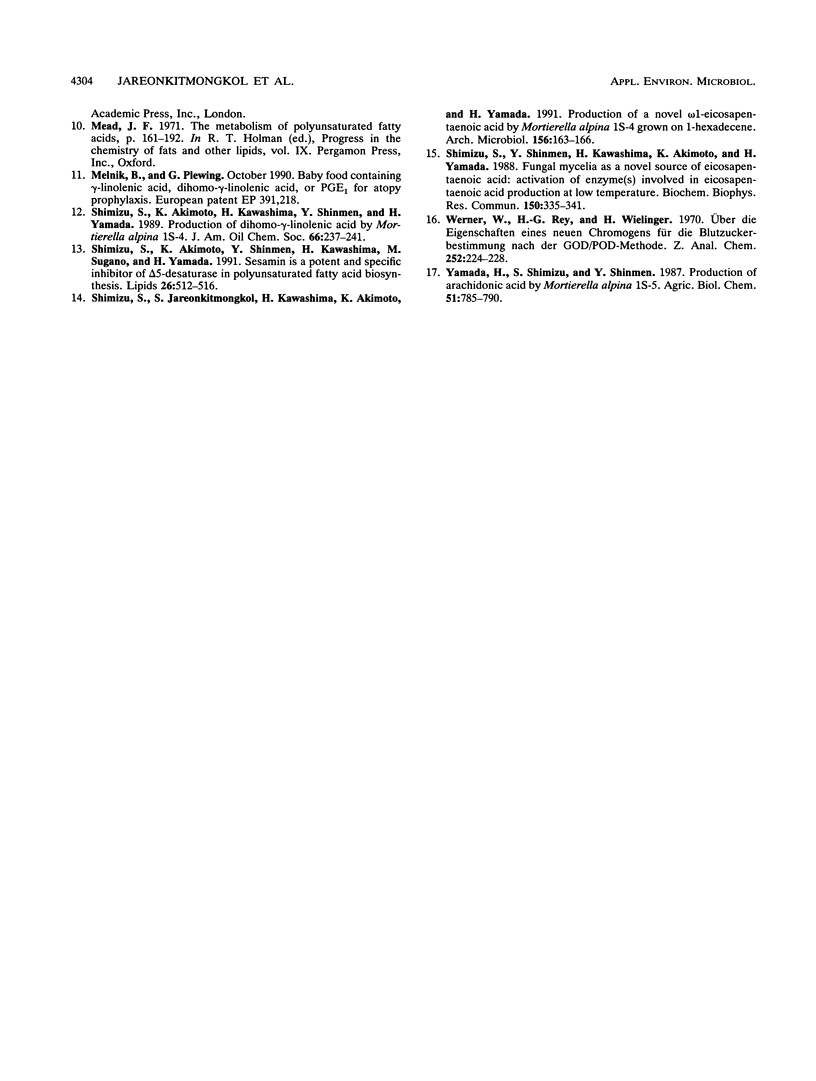
Selected References
These references are in PubMed. This may not be the complete list of references from this article.
- FOLCH J., LEES M., SLOANE STANLEY G. H. A simple method for the isolation and purification of total lipides from animal tissues. J Biol Chem. 1957 May;226(1):497–509. [PubMed] [Google Scholar]
- HULANICKA D., ERWIN J., BLOCH K. LIPID METABOLISM OF EUGLENA GRACILIS. J Biol Chem. 1964 Sep;239:2778–2787. [PubMed] [Google Scholar]
- Jareonkitmongkol S., Kawashima H., Shirasaka N., Shimizu S., Yamada H. Production of Dihomo-gamma-Linolenic Acid by a Delta5-Desaturase-Defective Mutant of Mortierella alpina 1S-4. Appl Environ Microbiol. 1992 Jul;58(7):2196–2200. doi: 10.1128/aem.58.7.2196-2200.1992. [DOI] [PMC free article] [PubMed] [Google Scholar]
- Shimizu S., Akimoto K., Shinmen Y., Kawashima H., Sugano M., Yamada H. Sesamin is a potent and specific inhibitor of delta 5 desaturase in polyunsaturated fatty acid biosynthesis. Lipids. 1991 Jul;26(7):512–516. doi: 10.1007/BF02536595. [DOI] [PubMed] [Google Scholar]
- Shimizu S., Shinmen Y., Kawashima H., Akimoto K., Yamada H. Fungal mycelia as a novel source of eicosapentaenoic acid. Activation of enzyme(s) involved in eicosapentaenoic acid production at low temperature. Biochem Biophys Res Commun. 1988 Jan 15;150(1):335–341. doi: 10.1016/0006-291x(88)90525-6. [DOI] [PubMed] [Google Scholar]


